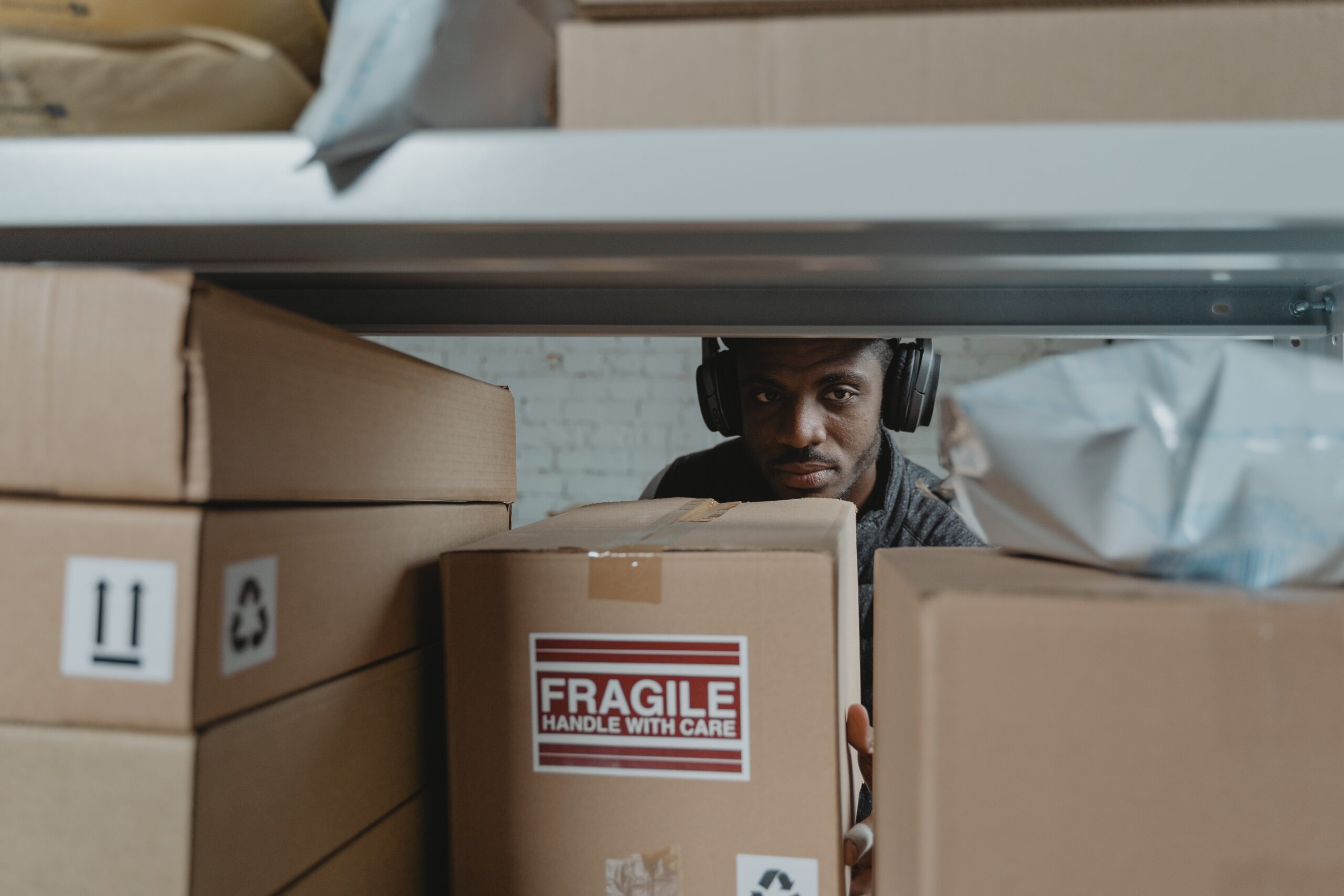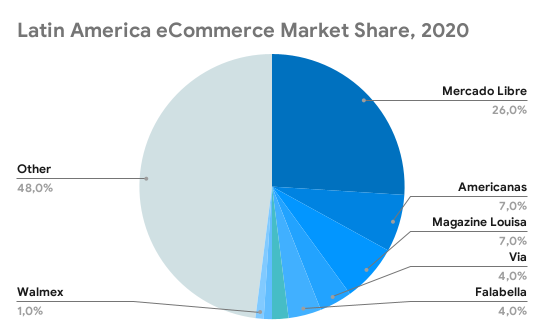4 keys to sell online in Latin America in 2023

Although stories of political turmoil and economic instability tend to make the headlines, Latin America is a dynamic region, with a thriving middle class and hundreds of millions of consumers that are increasingly going digital.
For those who seek to venture beyond traditional markets like the United States, Europe, or Asia, Latin America presents exciting opportunities to grow and boost sales. In fact, according to 2020 data from Morgan Stanley, it’s the fastest-growing eCommerce regional market in the world.
However, over 65% of the sellers will never be able to confirm their first order, and for those succeeding, it will take from 60 to 90 days to make their first sale. Cancellation rates usually start above 30% for newcomers in this market. Therefore, if you want to succeed in Latin America’s eCommerce, you must first understand its key features.
The rise of eCommerce in Latin America
Even though more than two-thirds of Latin Americans were internet users by 2019, the region was a latecomer to eCommerce. Until recently, the risk of fraud and the lack of access to payment methods like credit cards kept consumers from buying online.
However, the COVID-19 pandemic severely disrupted our daily lives, forcing millions of people around the world to shop online. Latin America was no exception to this: the region became the fastest-growing eCommerce market, expanding at a 37% rate in 2020.
Latin America’s eCommerce is projected to grow at a 20% compound annual growth rate (CAGR) through 2025. In Brazil, the biggest market with the highest penetration rate for eCommerce, this sector is expected to continue growing at a 30% CAGR through 2024.
1. Entering the market
The best choice to enter Latin America’s eCommerce is by posting your products on marketplaces. According to Morgan Stanley, Latin America’s 8 largest platforms comprise more than half of the region’s eCommerce market share.
Some of the region’s most important marketplaces include:
- Mercado Libre, the Argentine giant which alone accounts for roughly 28% of eCommerce in Latin America.
- Americanas, Submarino, and Sou Barato, owned by B2W Digital. Americanas is the largest Brazilian marketplace, receiving over 110 million visits per month.
- Casas Bahia, Extra, and Ponto, owned by Via.
- Magazine Luiza.

Source: Morgan Stanley
While these websites offer vast opportunities to sell online, winning their Buy Box and attaining visibility among their vast catalogs is no easy feat, and can take months, energy, and significant sums of money. It may take even further to earn trust from buyers, and until then you might have low conversion rates and high numbers of cancellations. Moreover, most cross-border sellers struggle to comply with customs regulations and consumer protection laws, which differ from country to country and are constantly changing.
An easier way to do this is by partnering with a cross-border eCommerce megastore like nocnoc, which allows you to sell your products in Latin America’s leading marketplaces by simply uploading your catalog to a single Seller Center. Your products can then be sold with maximum exposure from day one, and be delivered by nocnoc to customers, without having to craft local marketing strategies, manage your store reputation, or deal with complex payments, international shipments, customs clearances, cancellations, and returns.
2. Payment methods
Since only 19% of Latin Americans own a credit card and only 6% own cards that are authorized for international transactions, you cannot rely on credit cards alone to sell in this region. Any pricing strategy in Latin America should include providing several payment options such as mobile payments, digital wallets, and vouchers.
Voucher systems like boleto bancário in Brazil, OXXO in Mexico, and Via Baloto in Colombia have become one of the most popular online payment methods, enabling people without a bank account to shop online. When customers select this option on an online purchase, they download a voucher with the details of their transaction and a barcode. This voucher can then be paid at an ATM, a bank, a supermarket, or a convenience store.
Another convenient way to target Latin American consumers is by offering installments. By dividing the full amount of the purchase into several smaller payments, consumers can afford items out of their normal budgets, such as consumer electronics, perfumes, or jewelry. Nearly half of online purchases in Brazil are paid in installments, so make sure this option is available for your buyers.
3. Logistical challenges
Operating in Latin America is significantly harder than in other regions of the world. According to the World Bank’s Logistics Performance Index, which measures the quality of a country’s logistics services on a score from 1 to 5, the region score is 2.66, lower than the world average of 2.87 and far behind countries such as China (3.61), the United States (3.89) and Germany (4.20).
In practice, this means that Latin America presents unique challenges that make it difficult for inexperienced retailers to deliver their packages. These include:
- Poor infrastructure, with many unpaved roads in rural areas.
- Difficult terrain, in regions like the Amazon rainforest or the Andes.
- Inconsistent postal codes and address systems, which may lead to delivery errors.
- The risk of cargo theft in areas with high crime rates.
Therefore, for newcomers to Latin American eCommerce, the best option is to partner with third-party logistics providers who already know the region well. National postal services like Correios in Brazil may allow you to deliver throughout the entire country at a relatively low cost, but their shipping times are often unpredictable and lengthy.
On the other hand, there are many private delivery options, ranging from express carriers like FedEx or DHL to local startups like Loggi. Make sure the service that you hire isn’t too expensive, since high delivery costs are one of the main reasons why customers abandon their shopping carts. Also, hiring small, informal delivery companies or independent drivers isn’t very advisable. Although these make up the majority of last-mile deliveries in countries like Mexico, Colombia, and Argentina, their small scale and their lack of route optimization technologies make them far less efficient, resulting in delays.
4. Building trust with your buyers
One of the main challenges for sellers in this region is earning your buyers’ trust, which is critical to minimizing cancellations and improving conversion rates. In eCommerce sites like Mercado Libre and Americanas, visitors encounter dozens of sellers with unfamiliar names, many of which have no online presence outside the marketplace.
As a result, Latin American consumers often rely on peer-to-peer platforms to find tips on how to shop online and which sellers are trustworthy. This behavior can be seen on websites like PromoDescuentos, Pelando, and Promobit, where users can take part in forum discussions, post offers from different marketplaces, and like and comment on these posts.
Generating trust with your customers starts by having a website they can land on when they Google your brand. You don’t need to be active on social media or create lots of content for your website, but you should be able to show your customers that your existence isn’t limited to the marketplace.
Once the purchase has been made, customer service is vital to strengthen trust and avoid last-minute cancellations. Few Latin Americans are fluent in English, so it’s essential that you offer customer support in Spanish or Portuguese, or at least outsource these services to a company that does. Providing buyers with a tracking number can also help build trust, as they allow customers to follow their orders and make sure they are on their way.
Let us help you every step of the way
At nocnoc, we provide a one-stop solution for sellers who wish to boost sales in Latin America. By connecting to our Seller Center and uploading your product catalog, you can start selling your products risk-free in the region’s top marketplaces in a matter of hours.
We take care of everything: translations, posting your products on marketplaces, international payments, taxes, logistics, marketing campaigns, and native customer service so you can sit down and simply watch your sales go up.
Request a free session with one of our experts to see how you can generate sales in Latin America.
SUBSCRIBE TO OUR NEWSLETTER
Gain access to the latest news and insights on e-commerce in Latin America.